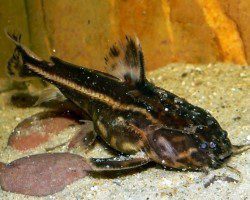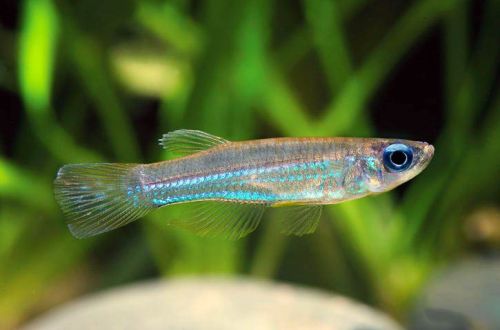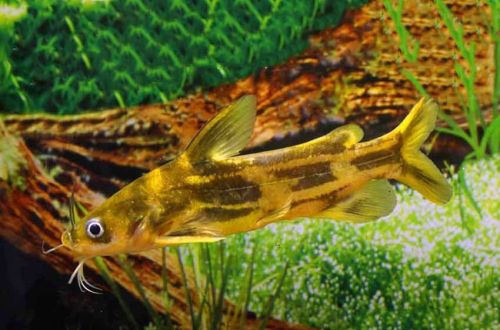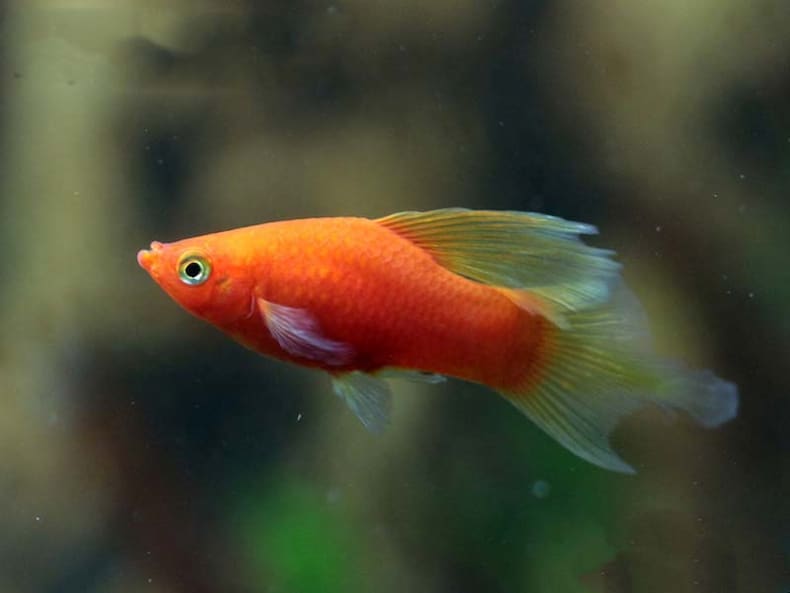
Pecilia highfin
Pecilia is high-finned, in English-speaking countries it is referred to as Hi-Fin Platy. The name is collective and applies equally to hybrids of the common platylia and variatus common, obtained by crossing with the flag swordtail. A characteristic feature of these fish is a long (high) dorsal fin.

Coloring and drawing of a body can be the most various. The most popular color forms are those of the Hawaiian, Blacktail, and Red platies.
According to the structure of the fin, it can be distinguished from another variety – Flag flag. Its dorsal fin has a shape close to triangular, and the first rays are noticeably thickened and differ in height from the subsequent ones. In Pecilia highfin, the rays of the dorsal fin are approximately equal in length and thickness, and in shape it resembles a scarf or ribbon.
Brief information:
- The volume of the aquarium – from 60 liters.
- Temperature – 20-28°C
- Value pH — 7.0–8.2
- Water hardness – medium to high hardness (10-30 GH)
- Substrate type – any
- Lighting – moderate or bright
- Brackish water – acceptable at a concentration of 5-10 grams per liter of water
- Water movement – light or moderate
- The size of the fish is 5–7 cm.
- Nutrition – any food with herbal supplements
- Temperament – peaceful
- Content alone, in pairs or in a group
Maintenance and care
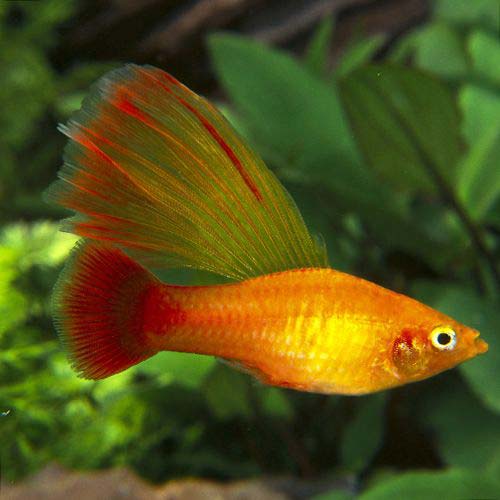
It is one of the most unpretentious aquarium fish. Perfectly adapts to various conditions. In particular, it can live in a wide range of values of the main water parameters (pH / GH) and is not demanding on the choice of design. Despite this, it is recommended to keep Pecilia highfin in warm water (22-24°C) with neutral or slightly alkaline pH values with plenty of shelters in the form of thickets of aquatic plants.
Most popular, peaceful species of comparable size will do as tankmates. A good choice would be other viviparous fish that live, as a rule, in similar conditions.
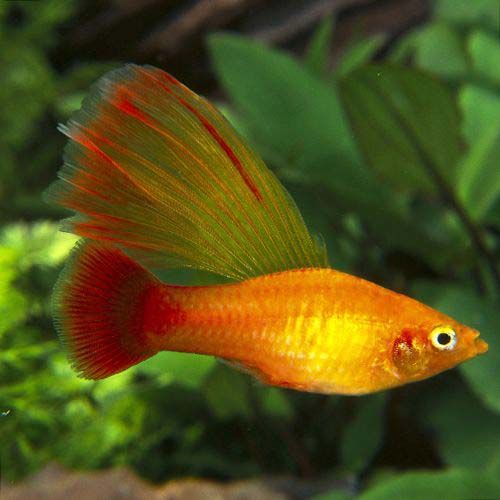
Food. They accept most of the popular foods in dry, frozen and live form. Herbal supplements should be present in the daily diet. In the absence of this component, fish can begin to damage the delicate parts of plants.
Breeding / reproduction. Breeding is very simple and even a novice aquarist can do it. In favorable conditions, females are able to bring new offspring every month. The fry are born fully formed and immediately ready to eat. Feed with special products for juvenile aquarium fish (powders, suspensions), or with ordinary crushed dry flakes.



